Where are the remnants of remote programs stored and how to remove them?
According to Microsoft requirements, working program files must be stored in folders % appdata% and % localappdata% your profile windows user. Accordingly, you need to look for leftovers there.
You can stock up a bottle of patience, sit down and figure out which folder to which application applies. And you can make it much easier - create a new profile and move all the working files into it (documents, music, video, photos). At the end, it only remains to delete the old profile, and with it all the remnants of the programs that were removed earlier.
This will save a considerable amount of time. Plus, you will save yourself from accidental errors, because the system itself will create a profile in the desired form. Of course, and delete the old profile correctly. Your task is to completely transfer personal files from one profile to another.
In a few days only those programs that you have already installed and which you use will leave their settings in the new profile.
Removal of residues
To begin work on the cleaning of balances, you need to create a fresh account, which will not contain any settings. To do this, open the "Control Panel" and select the item "User Accounts" in it.
A window opens with a list of available accounts. In it, click on the link "Create account».

After specifying a name for the new account, select its type (User or Administrator) and click on the button "Saving account".
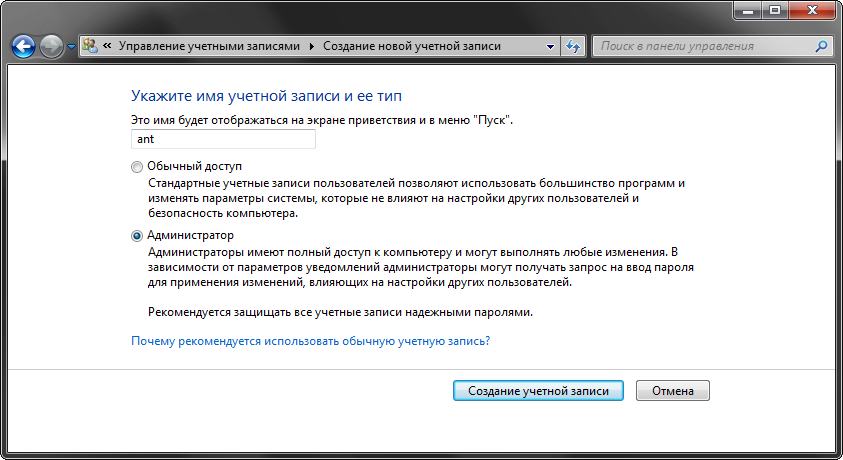
After that, the list of accounts will be expanded by one. You can go to the next step - transferring data.
Transferring data to a new account
Before you start transferring personal data, you must switch to a new account. When you switch, the operating system will create a new profile from scratch and put all the basic elements in it.
To switch to a new account, click "Start" - the arrow to the right of "Shut Down" - "Log Off". In the user selection window, click on the new account.
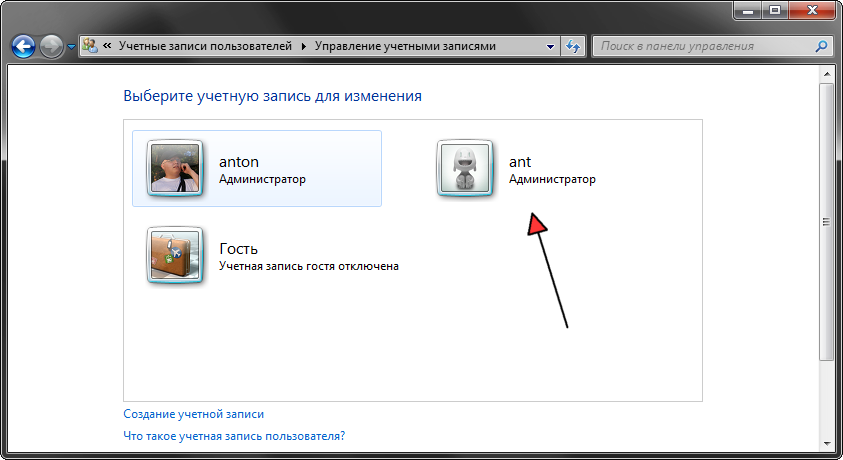
To start transferring data between accounts, you need to open two Explorer windows and place them next to each other. In the left window open the folder with the old profile, and in the right folder with the new profile. The old and new profiles are located on the system drive in the Users folder. It's difficult to miss.
Successively transfer the data from the personal folders from the old profile to the new one. First, "Documents", then "Images, then" Video "and" Photos. "
If you store personal data in other folders outside the user profile, you do not need to transfer them.
To delete an old account, you need to make sure that all the data has been transferred to the new profile. Then do the following:
- Open the "Control Panel" - "User Accounts"
- Manage another account
- Choosing an old account
- Deleting an account
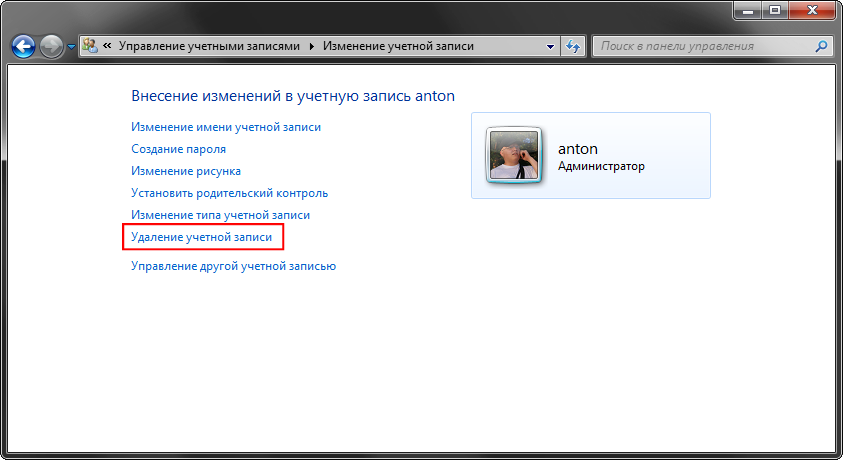
In the confirmation window, click the "Delete files" button
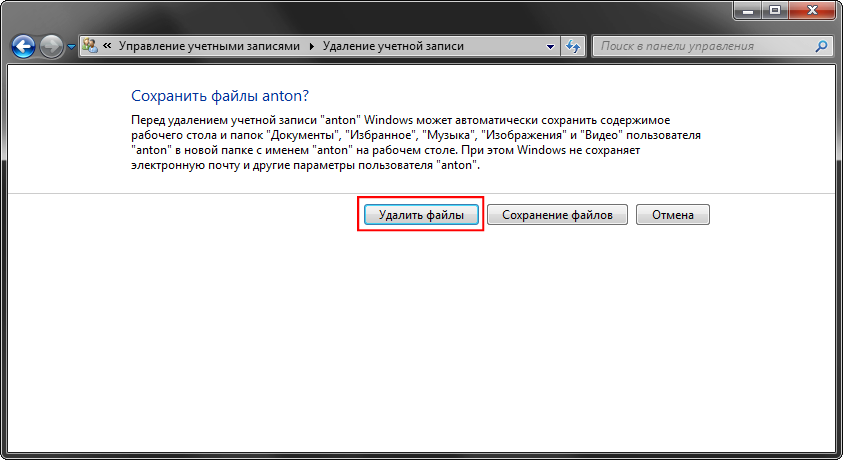
This completes the deletion process. Now you need to set up a new profile for yourself and work in the same mode, but with a clean account.
What to look for
When using this method of removing residues from remote programs should pay attention to a number of features that can be extremely important.
- Some programs (for example, Dropbox) are installed in a folder % appdata% entirely, because they will have to reinstall again.
- The settings of some programs may be reset or saved to the old profile. Therefore, it is recommended to check the settings and change the paths, specifying in them the path to the new account.
- After switching to a new account, you may need to configure the switchover layout further (if you do not use the standard version).
In the rest everything is working in the normal mode and no extra gestures are required.
Conclusion
After all the manipulations with my computer, I managed to free more than 20 GB disk space , to which I am unspeakably happy.
Also worth noting is that there is also the All Users folder, which stores application settings for all users ( a shared folder). To understand the data in it, I had to sit down and sort through all the folders manually, deleting unnecessary ones. Saved the fact that in my case there were very few of them.
Similarly, you can delete the balances in others versions of Windows (XP-10).
Instructions
To clean the system registryand from unnecessary records there are a number of programs. The most popular are the Russian-language interface and fairly simple to use. Consider the process of deleting unnecessary records from registrybut with the help of a free and powerful utility CCleaner. First of all, you need to download and install it on your computer.
During the installation, choose the Russian language. After installation, run the application and see the main window. In this window, on the left, we select the menu item "Registry". If not, put a checkmark in front of each menu item and click "Search problems." The program starts scanning registry for errors.
The scan progress is displayed at the top of the main window programs, in the form of a filling strip. As you scan, the list of erroneous entries begins to appear in the list below registrya. In this list, you can see the type of error, and the program that did it. After completing the scanning process, we click the "Fix" button. After clicking this button, the program prompts you to save the backup copies of the changes made. Click Ok. Thanks to this, it will be possible to restore registry if, after cleaning, the computer will work worse.
In the next window, the program will offer you options to solve the problems found. "Fix" button - fixes one item from the list. The "Fix checked" button - automatically corrects all errors found in the list. By default, all items in the list are marked, if you wish, you can change this. Click on the check mark to remove the mark from those that you want to leave unchanged. In the usual case, it is recommended to click the "Fix checked" button. When you are finished, click the Close button.
After the procedures are done, your registry gets rid of unnecessary and erroneous records, which improves system performance. After the work is finished, you can close the CCleaner program.
The Windows registry is a hierarchical database that contains information about system settings, hardware and software, user profiles, etc. When uninstalling the program, in theory, its settings should be deleted from the registry, but this does not always happen - because of user errors or incorrectly written utilities-uninstallers.
Instructions
Activate the Registry Editor. To do this, enter the regedit command in the program startup window (called by the combination of keys Win + R or the "Run" option of the Start menu). In the "Edit" menu, click "Find" and in the search window write down the name of the program from which you want to clear the registry. This window can also be called by the combination of hot keys Ctrl + F. Use the Find Next button to start the search.
If an entry with this name is found, right-click on this line and select the "Delete" option from the drop-down menu. You can also use the Delete key or choose Delete from the Edit menu. After the first file found, press F3 to find other entries related to this program and delete them by one of the methods described.
This method can take a lot of time if the remote program was a complex structure - for example, Adobe Photoshop. To speed up the process, you can use third-party utilities to clean the registry. Download and install free program RegCleaner.
Select "Search" from the main menu. In the search box, enter the name of the application from which you want to get rid, and click the "Search" button. If an entry with this name is found, the "Delete" button appears in the lower right corner of the screen. Use it to clear the registry of obsolete data.
Instructions
Expand the main menu of the operating system, if you want to delete the partition that was left after uninstalling the application programss. Go to this section and right click on it. In the fallen context menu select the "Delete" line, and answer yes to the confirmation of the confirmation of the operation - click "Yes".
Run the file manager if you need to clear hDD from unnecessary files, left after removal programss. In Windows, you can do this by pressing the Win and E keyboard shortcuts. Navigate to the Program Files folder on the system drive - it's the default application programswe place our catalogs. Find a folder whose name matches the name of the deleted folder programss, and click it once with the mouse. To delete a directory with all its contents in the Recycle Bin, click the Delete button, and use the Shift + Delete shortcut to delete it completely (bypassing the Recycle Bin).
Navigate to the folder named ProgramData - it is located on the same level of the directory hierarchy as the Program Files. In it, applied programsyou store temporary files with the data used in the process. As in the previous step, find and delete the folder that belongs to the nonexistent programsif there is no program in your version of the operating system ProgramData, then the corresponding temporary data folder should be searched in the directory with the name Application Data. It is placed in the folder whose name corresponds to your account (the default is Admin), and this folder, in turn, is located inside the Documents and Settings directory of the system drive.
Start the editor the Windows Registry, if you also want to remove unused entries from the uninstalled programss. This can be done by pressing the Win + R shortcut followed by the regedit command and the Enter key. Use the hotkeys Ctrl + F to open the search dialog, and then enter the name of the remote programss or a part of it and click the "Find Next" button. When the editor finds in the registry entries relating to the interest you are interested in programse, before removing them, make sure that this is exactly what is required - undo operations are not provided in the Registry Editor.
Use to clean the registry of specialized programss - they have the functions of searching and deleting records that do not belong to any of the installed programs. Find an application on the Internet is not difficult - for example, it can be a free version programss Uniblue RegistryBooster (http://uniblue.com/en/software/registrybooster).
Work on the computer and especially on the network involves the use of various programs, as tools for achieving one or another goal. Some of them programs can be subsequently deleted, but traces of them still remain in your system.
You will need
- Registry Cleaner
- Programs for cleaning up temporary files
- Programs for optimizing the system
Instructions
The logical thing to do first is to go in a simple way: through the "Start" menu button go into the installation and uninstallation programs and perform the deletion in the normal mode. If the traces are deleted programsyou still stayed, take specialized programss, which help to clean the system of unnecessary logs, temporary files and old reports. The most famous and common ones are: Your Uninstaller, Auslogics BoostSpeed, Ccleaner, Regseeker. Obsolete versions of these programs, as a rule, are distributed free of charge or conditionally-free. But most programs, which work with new systems, require registration and payment, while you can pay immediately, through the network.
Some files may not be able to be uninstalled due to a lock: when trying to delete them, the system continually reports that the file can not be deleted because it is being used on the system. It happens that the attempt to delete such a file permanently "hangs" the entire operation of the system. In this case, you can help programsbut of the Unlocker type. It will unlock the file and remove the "hidden" and "read-only" icons from it, and then delete it.
note
Just in case, first preview the list of cleaners marked with a purge and make sure that you do not erase something you need, such as a list of Internet addresses or autocomplete forms. This can cause the browser to "forget" your passwords or delete the log of visits.
Before using the program, make sure you have a backup of the system. Be careful with the key files.
Sources:
- Tips for the system administrator. How to uninstall the program cleanly
When a file is deleted in the usual way, it is usually placed in the trash. However, until the latter is cleared, it remains on the hard disk. Sometimes circumstances require you to delete the file bypassing the trash.
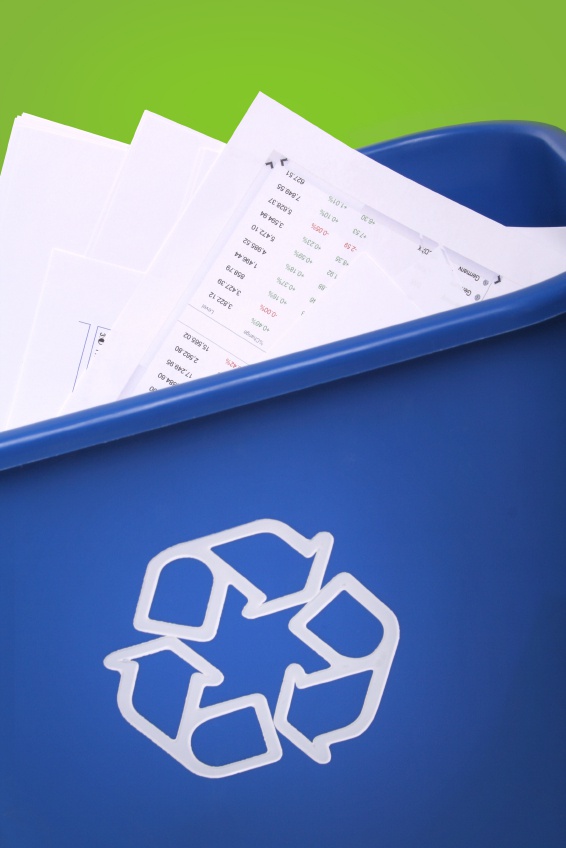
Instructions
To delete a file without putting it in the trash, use the keyboard shortcut Shift + Delete. To do this, select a file with the mouse or keyboard that you want to delete and press this key combination. Instead of the standard dialog box: "Do you really want to move this file to the Recycle Bin?" - you will see another window: "Do you really want to permanently delete this file?". Confirm your desire by clicking the "Yes" button. Now the file is deleted without putting it in the trash.
If you want to delete files in the usual way, but, nevertheless, do not put them in the trash, make changes to its properties. To do this, right-click the recycle bin icon on the desktop and select the "Properties" menu. Check the box next to "Delete files immediately after deleting them without putting them in the trash" and save the changes. Now when deleting files using the Delete button or the "Delete" function, they will not be placed in the trash.
In addition, there are special programs that allow you to completely delete files from hard drive. In this case, they do not fit in the trash, and also the possibility of their subsequent recovery with the help of programs for recovering deleted files is excluded. This result is achieved by repeatedly overwriting the memory cells in which the deleted file, by special algorithms. Examples of such programs are Active ZDelete, Clean Disk Security, CCleaner and others.
note
Removing files without putting them in the trash is undoubtedly very convenient. And the inability to restore them represents a good bonus in case you do not want an unauthorized person to be able to view the files you deleted. However, before deleting the file irrevocably, think again about whether you will regret it after a while.
Sources:
- how to rename the trash
One of the causes of computer crashes is the consequence of incorrect deletion of programs from the hard disk. There are several simple procedures, following which one can avoid undesirable consequences.
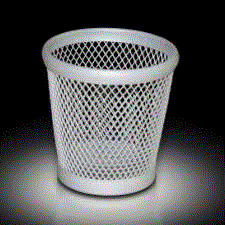
Instructions
Do not uninstall applications by transferring a folder from disk to the Recycle Bin. This method of removal is acceptable only if you installed this program in the same way - by copying the folder with the program to the hard disk.
If you installed the application using a special installation program (installer), then delete it using a special uninstaller-uninstaller program. It is in the same folder as the application itself. Locate the "uninstall.exe" or "uninst.exe" file in the folder and start it. The uninstallation process will begin. Follow the step-by-step instructions and the program will do everything for you.
Another way to run the uninstaller program is through the Start menu: "All Programs - The name of the application to be uninstalled."
Sometimes there are such applications that do not have an uninstaller program. In this case, use standard program installation and removal from the operating room itself windows systems. Open it through the "Start - Control Panel - Add or Remove Programs" menu.
In the window that opens, select the required program from the list of programs and click the Delete button. Confirm that you really want to delete the selected program and run the uninstall process. Then again follow the instructions.
If for some reason unknown to you you can not delete an application, use special uninstallers. They effectively remove not only the applications themselves, but also the so-called "tails" in the registry. True, these programs have a number of shortcomings. They require special knowledge and skills in their use, most often the interface in English, take up a lot of space, improper handling may not free them, but rather clog the hard drive.
Related Videos
![]()
When the "Delete" window appears yandex browser", Be sure to check" Delete all browser settings ". After that, the uninstallation of the program will begin. You will learn about its end from the opened window Internet Explorer with a strange sad ghost and the inscription "Yandex.Browser retired".
Like most programs, "Yandex.Browser" leaves in your operating system "Tails". They also need to be cleaned. For this you can take advantage of free utility CCleaner, which is required to download on the Internet.
Run CCleaner, select "Registry" and click the button "Problem Search" below. Wait for the utility to scan the registry entries in your operating system. By default, all tails from Yandex.Browser and other remote programs are already ticked.
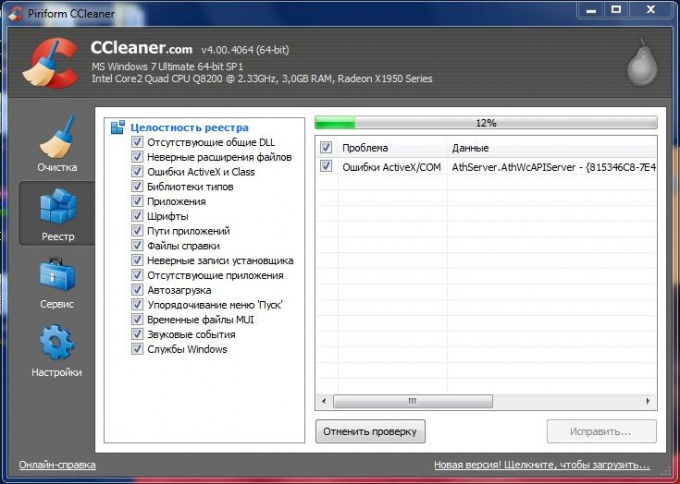
Click on the "Fix" button in the lower right corner. If the program asks if you want to save the backup copies of the changes, click "No". Click the "Fix checked" button, wait for the process to finish, and then close the program. Restart the computer. Now you can be sure that "Yandex.Browser" is correctly and completely removed from your operating system.
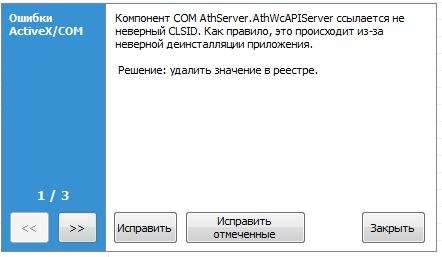
Helpful advice
Through the CCleaner program you can not only remove the "tails" of programs, that is, clean the registry, but also clean the browser caches, and also control the startup.
Related Article
Sources:
- how to delete the Yandex browser password
Internet Explorer - a web browser designed to view Internet pages on the network. Like all applications on the computer, Internet Explorer goes through three main stages of "life": installing the program into the system, using the program and deleting it.
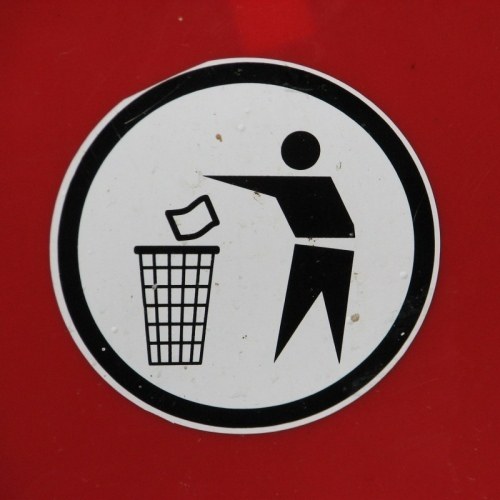
The main ways to uninstall Internet Explorer in Windows 7
Most often, Internet Explorer is standard the Windows program, which is installed on the computer together with the system. You can remove it either mechanically - with the help of special programs, or manually.Mechanical removal method
There are two main types of special applications designed to remove programs. The first type includes standard Windows uninstallers, to the second - uninstallers, which the user has installed.To use the first type of application, go to the "Start", "All Programs", "Internet Explorer" and click delete or in some cases uninstall. A window appears, click "Next" until the progress bar appears, which indicates the start of the deletion procedure. Almost the same algorithm can be used if you delete the browser through the "Control Panel". Enter the panel, click the "Programs and Features" icon. A window opens with a list of programs installed on the computer. From them, select "Internet Explorer", click Delete. As in the previous case, click "Next" in the lower right corner and the browser will be deleted.
Before using the second type of uninstallers, install one of them on the PC. After installation, restart the device and open the application. It will issue all the programs that were installed by the user. From them, select, respectively, "Internet Explorer" and click "Uninstall". The advantage of this program is that it does not just erase the application from the computer, but also cleans up the so-called "tails" in the registry. From the remote application there will be no trace, as if it was not installed. This, of course, has a positive effect on the system. Less chance of errors. The main drawback - basically all these programs require introduction license key and many on english language. If with the language at least somehow it can be understood, then the search for a free key on the Internet - the task is laborious, and its absence halves the working capacity of the program, or simply makes it unworkable.
Manual removal method
A manual web browser can be deleted via My Computer or a file manager. To delete through My Computer, open the folder, go to the drive (C :), then in the "Program Files", find the folder named "Internet Explorer", select and hold the shift + delete key combination. Deletion through the file manager includes the same steps as the previous method, just visually it looks a little different.In the process of working with personal computer many often use one-day programs. The presence of third-party utilities can greatly slow down the performance of the PC and operating system.

Now open the "Registry" menu and click the "Find problems" button. This procedure is necessary to correct incorrect keys, the presence of which slows down the computer. After preparing the error list, click the Fix button.
Cancel creation backup, by clicking the "No" button. Select the "Fix checked" option. Restart the computer after performing the described operations.





